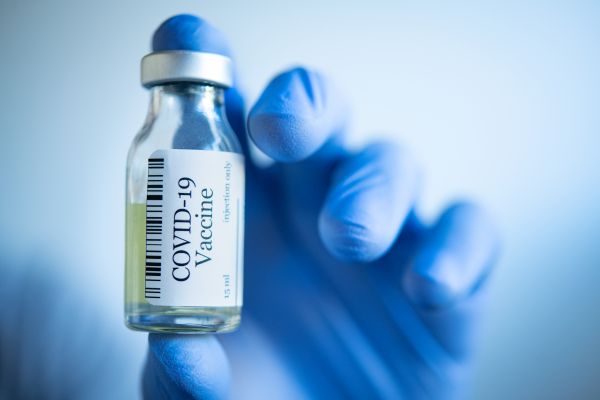Meyer, et al. (2021) explain that, "Although healthcare workers (HCWs) can serve as ambassadors of COVID-19 vaccine acceptance, surveys have found low acceptance rates among HCWs (eg, 33.5%). However, those surveys were conducted before the issuance of vaccine emergency use authorizations (EUAs) by the Food and Drug Administration (FDA). We surveyed all employees of a healthcare system on the eve of vaccine distribution to encourage them to receive a COVID-19 vaccine, assess their intentions to do so, and understand reasons for hesitancy."
On Dec. 4, 2020, an announcement concerning anticipated vaccine availability was emailed to all employees, the researchers say. The announcement contained a link to a five-question online survey and stated that employees’ time-sensitive response was needed to guide vaccine distribution. Reminders were included in two emailed employee newsletters.
A total of 16,292 employees (68.5% response rate) completed the survey. The employee population is 73% female (17 ,362 employees) and 89% White (21,168 employees), with a mean age of 43 years. When asked whether they would “decide to receive the COVID-19 vaccine when one is available to [them],” 55.3% of respondents (9015 employees) said yes, 16.3% (2658 employees) said no, and 28.4% (4619 employees) were undecided. Patient-facing employees (58.2% of respondents [9485 employees]) were more likely than employees who do not interact with patients to say yes (57.3% [5432 employees] vs 51.4% [3132 employees]; difference, 5.9%; 95% CI, 4.2%-7.4%; P < .001); however, they were also more likely to say no, although the difference was not significant (17.3% [1639 employees] vs 15.6% [948 employees]; difference, 1.7%; 95% CI, 0.5%-2.9%; P = .006). Intention varied little by campus, and the researchers found no consistent patterns of intention among different patient-facing areas of work.
Most (90.3% [6569 employees]) of those who responded no or undecided reported concerns about unknown risks of the vaccines, 44.3% (3226 employees) reported they wanted to wait until others’ vaccine experiences are known, and 21.1% (1539 employees) reported that they do not trust the rushed FDA process. More than one-half (57.4% [4187 employees]) cited concerns about known adverse effects, such as headache and fatigue.
The researchers say they observed a steady increase in intention to receive a vaccine during the period of data collection coinciding with several high-profile, vaccine-related events (Figure 2A). The first was the livestreamed vote on December 10, 2020, by an independent FDA advisory committee to recommend the first COVID-19 vaccine EUA. Among 15,003 employees who completed the survey before that time, 53.2% (7981 employees) reported they would receive a COVID-19 vaccine; by contrast, 80.2% (1034 employees) of the 1289 respondents who subsequently completed the survey reported such an intention (difference, 27.0%; 95% CI, 24.7%-29.3%; P < .001). Among the 1289 employees who responded after December 10, patient-facing employees again (1054 employees) were more likely than non–patient-facing employees (192 employees) to intend to receive a vaccine (82.3% vs 69.8%; difference, 12.5%; 95% CI, 5.6%-19.4%; P < .001). As of February 18, 2021, 67.2% of employees (15,983 employees) have received at least 1 COVID-19 vaccine dose.
Reference: Meyer MN, et al. Trends in Health Care Worker Intentions to Receive a COVID-19 Vaccine and Reasons for Hesitancy. JAMA Netw Open. 2021;4(3):e215344. doi:10.1001/jamanetworkopen.2021.5344

Be the first to comment on "Trends in Healthcare Worker Intentions to Receive a COVID-19 Vaccine and Reasons for Hesitancy"